As congregations shrink throughout Maine, former church properties get new life
There isn't one apartment of the 19 being built at the former Notre Dame des Lourdes church in Saco that will be alike.
“Nothing here is cookie-cutter,” says Deirdre Wadsworth, president of Hardypond Construction as she toured the 20,000-square-foot Notre Dame.
The interior, which was once mostly open from floor to the rafters, is divided into studio apartments — but not traditional studios. Stained glass windows are a small part of it; the apartments also vary wildly in sizes, some have lofts and other non-traditional space.
On Stevens Avenue in Portland, the same can be said for the 88 apartments that are being created in the former St. Joseph convent.
The Motherhouse, a nod to its standing with the local Sisters of Mercy, couldn't be more different from the clapboard church in Saco. The 110,000-square-foot three-story brick building, however, has something in common with the clapboard former church.
“There's no such thing as typical,” developer Kevin Bunker, of Developers Collaborative, says of the studio and one-bedroom apartments in the building.
As the Catholic Church consolidates and closes property in the face of shrinking parishes and growing expenses, developers are finding ways to make the property — most of it well-built and much of it well-located — into something that works for the community it's in.
Projects range from those by developers like Wadsworth and Bunker, to smaller private ones.
Both Wadsworth and Bunker say that creating modern living units out of a building that was made for something else is a challenge, but a challenge they relish.
“It's definitely more work, from the construction side and the project as a whole,” Wadsworth says. “But we get this [in return].”
Old community, new community
Notre Dame des Lourdes served a parish at 16 Cutts Ave. in Saco from 1929 to 2009. The building itself is older — originally built as a theater in the 19th century, the Portland Diocese bought it from the Second Baptist Church in 1929 to serve the growing French-speaking Catholic population in town, according to a diocese history.
The sale to Hardypond closed last September.
Hardypond has torn down the rectory, which adjoined the church, and will build larger modern additions on each side for a total of 80 units. All the units will be market-rate.
Architect John Shields, who designed the plan for the church interior, has also done many affordable housing projects. He is good at finding efficiencies in space.
The design for the interior makes use of the building's elements.
Stained glass was taken out of every other window, since windows that can be opened in case of an emergency are required by code. Much of that stained glass has been reused in partitions that separate living areas from sleeping areas in the apartments.
The top-floor units have lofts among the rafters, accessed by spiral staircases.
One apartment has a long hallway, large enough for a sitting area, with the blackboard from the Sunday school lining one wall. Stairs lead up to the rest of the unit.
“There are a lot of nooks and crannies,” Wadsworth says.
Wood from church pews was used to fill spaces and in other places wood was used.
Apartment size will range between 400 and 900 square feet. Units advertised on the Notre Dame on a Facebook page are for two of the larger units, with a separate bedroom, and are $1,400 and $1,200.
Hardypond also removed the white vinyl siding that has covered the church for decades, revealing detail that's now painted light blue, which pops against the soft yellow clapboards.
'They took good care of it'
At the Motherhouse in Portland, the changes are to the interior. Bunker says not much has to be done with the exterior — the brick, and even the gold leaf dome on the roof, are in good shape.
The building was not owned by the diocese, but by the Sisters of Mercy. The last nuns moved out in 2007, but the building has been maintained well, including being heated.
“They took good care of it,” Bunker says. “They maintained it very scrupulously over the years.”
Bunker originally got involved through John Wasileski, founder and owner of Sea Coast Management, which develops senior housing in southern Maine. Wasileski has ties to Catherine McAuley High School, most recently the Maine Girls' Academy, which was run by the Sisters of Mercy and is next door to the convent.
Bunker, who with his partner, Matt Teare, is buying Wasileski's interest in the Motherhouse, says apartments should be ready for occupancy in September.
The interior features wide halls, high ceilings and original woodwork.
The chapel will be used as a community area. Though it's been deconsecrated — no longer blessed by the church — it still has pews, and Bunker says he may keep them there.
The walls of the chapel in the altar area are hand-painted stencil and the dome, also stenciled, rises above it.
No two apartments in the building are the same.
One, for instance, includes a former entrance to the building. Steps descend to a walk-in closet where the door once was.
Bunker used historic tax credits, so historic elements must be maintained and modern ones must be complementary, but can't mimic the historic elements. Therefore, doors to rooms are modern, but the original wooden doors, complete with windows and transoms, that don't open, line the halls.
The building will have 66 affordable units and 22 market rate units, all either studio or one-bedroom. An addition that will be built behind it will add 161 apartments.
Witnesses to the past, lasting legacies
Private enterprise buying old churches to develop and live in is nothing new.
One of the state's longest-running restorations has been Notre-Dame du Mont Carmel in Grand Isle, in Aroostook County's St. John Valley. The church, a French Baroque basilica notable for its twin 80-foot towers, was built in 1910 and closed in 1978. Private investors bought the church in 1983 and staved off plans for demolition and a court battle that eventually involved the Vatican.
Work began on the basilica in 1984 and is ongoing, conforming to historic preservation standards.
It's now the Musee Culturel du Mont-Carmel, and hosts concerts, cultural events and houses the Acadian and Quebecois collection of Don Cyr, one of the developers of the church and president of its nonprofit.
More recently, in Vassalboro, St. Bridget's Church opened this summer as a privately owned community center, available for rent. Rachel and James Kilbride bought the church, as well as the parish house, where they now live, and an acre of land in 2015 and spent three years renovating it. Built in 1926, the church closed in 2011.
In Lewiston, developer Andrew Knight redeveloped St. Patrick's Church, which closed in 2011, and its rectory into an event center and luxury hotel, opening in late 2015.
Maine Preservation, which notes the project on its website, says revitalizing such landmarks attracts new investors while ensuring that “Maine's stunning witnesses to the past remain a lasting legacy for generations to come.”
Examples can be found all over Maine. Developers say that a lot of community work goes into church redevelopment projects — the property often carries deep emotional ties.
It was true of the Mont Carmel basilica — community resistance to it closing and being redeveloped prompted the years of legal obstacles.
Bunker and Wadsworth both worked closely with municipalities and community while finalizing their projects.
Still, churches and other religious property are attractive to developers for many reasons, including location.
“They're usually well-situated, usually in the middle of a town or city,” Wadsworth says.
The Notre Dame project doesn't have any community space, aside from the laundry rooms. “But look at where it is,” Wadsworth says, indicating downtown Saco. “There's their community space.”
The Motherhouse is in the center of the Deering neighborhood, where several new restaurants have opened, on the bus line and next to the Baxter Woods conservation area.
'No one's going to build any more of these'
Notre Dame is the second such project for Hardypond. The firm redeveloped the former Clark United Methodist Church in Portland into 25 apartments last year. The property was sold to investor Suzanne Hanson for $4.3 million earlier this year.
Besides location, Wadsworth says that churches in particular “have a huge amount of space, but it's not broken up.”
“They're built really well,” she said. “These older churches have bones, and great structure.”
Bunker agrees. “No one's going to build any more of these,” he says of the Motherhouse.
Four of the Notre Dame units have already been rented out to students at the University of New England who needed immediate housing.
Bunker is hoping some of the former Motherhouse nuns, who now live in adjacent McAuley senior housing, will come back to live in their old digs.
“There's typically strong demand for our stuff,” Bunker says. “But we've had hundreds [of applications for Motherhouse units]. People really want to live here.”
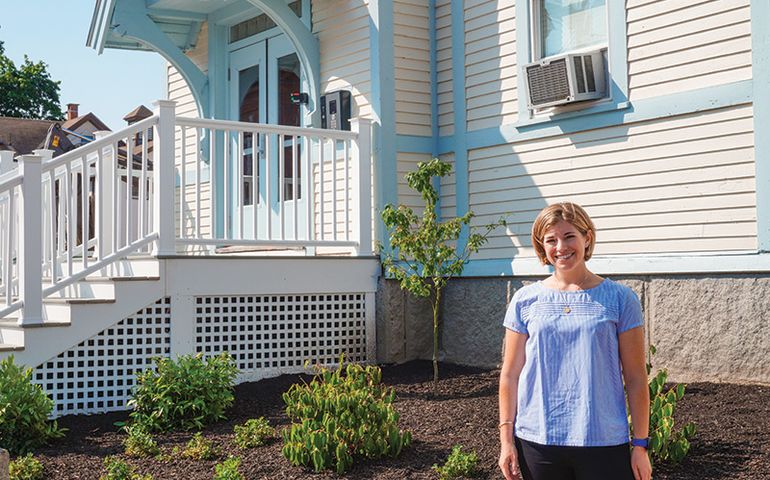

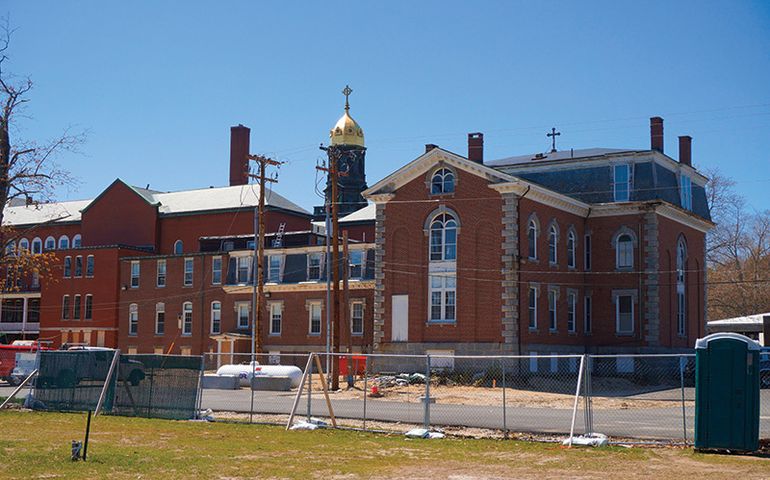

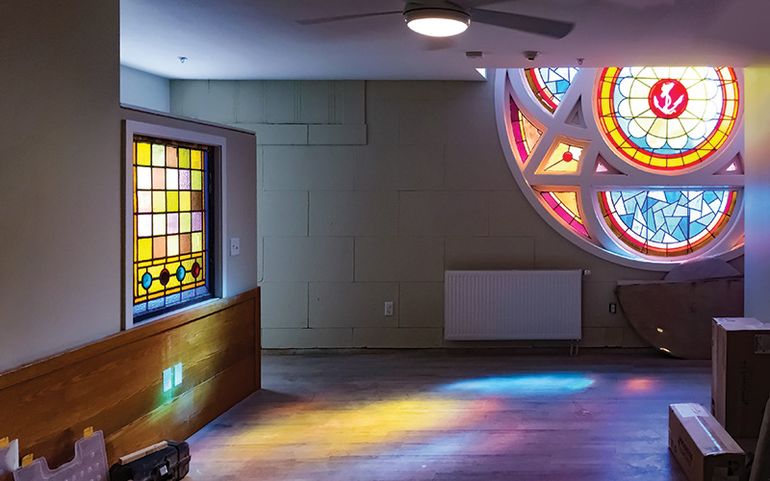

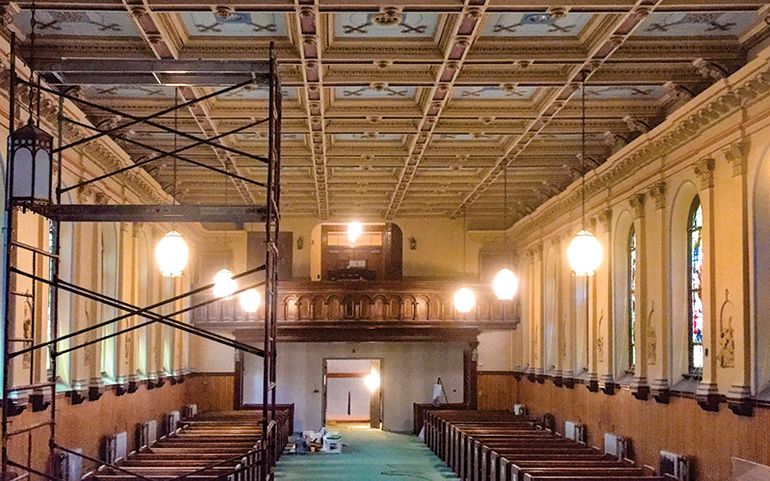

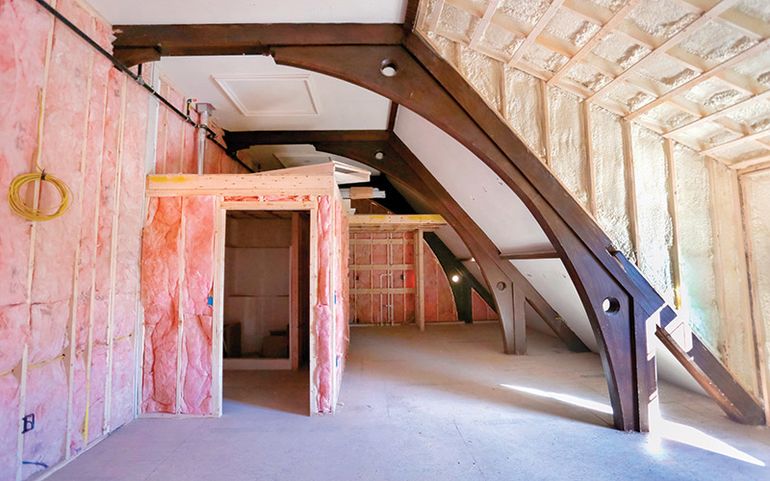











Comments